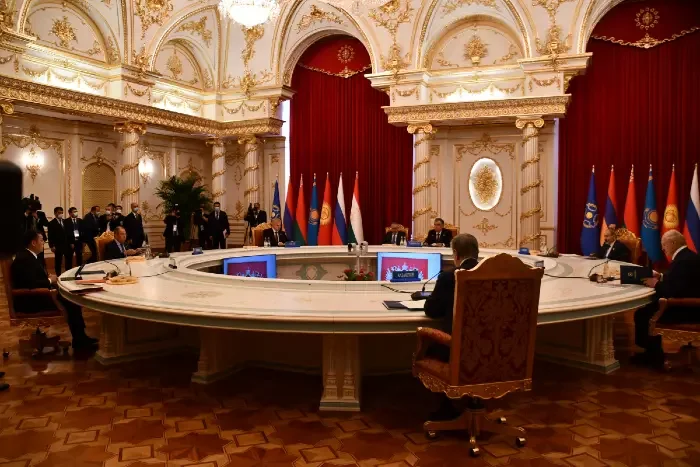The decision to hold large-scale military exercises – which began in the Khatlon region of southern Tajikistan, close the Afghan border on Monday – was taken in a session of the Collective Security Council (CSC) of the Collective Security Treaty Organisation (CSTO) in Dushanbe on September 16.
Chaired by Tajikistan President Emomali Rahmon, the meeting was also attended by Russian President Vladimir Putin, Armenian Prime Minister Nikol Pashinyan, Belarus President Alexander Lukashenko, Kazakhstan President Kassym-Zhomart Tokayev and Kyrgyzstan President Sadyr Japarov.
Alarmed by the "unfavourable" situation along the Afghan border, Russia and the other CSTO members vowed their support to Tajikistan, promising Dushanbe with all "necessary military and military-technical assistance" in case the situation on the southern borders deteriorates.
Tajikistan is a frontline state sharing a long border with Afghanistan (1344 km) but the CSTO countries would have reacted in the same manner had the security and sovereignty of any other state in the CSTO area of responsibility been threatened.
So, how are these countries so united and always stand by each other? Let us first find out their journey from a treaty to an organisation.
The journey from CST to CSTO
The Collective Security Treaty (CST) was signed by Armenia, Kazakhstan, Kyrgyzstan, Russia, Tajikistan, and Uzbekistan on May 15, 1992 for a five-year term, with the possibility of further prolongation.
In 1993, Azerbaijan, Belarus and Georgia joined the Treaty. It was registered by the UN Secretariat on November 1, 1995. Six member states (except Azerbaijan, Georgia and Uzbekistan) signed a protocol renewing the Treaty for another five-year period in 1999.
The Collective Security Treaty Organisation (CSTO) was established on May 14, 2002. The CSTO Charter was adopted on October 7, 2002 and signed by heads of all member states in Kishinev.
The CSTO received the status of observer at the United Nations General Assembly on December 2, 2004.

The CSC is the highest body of the organisation and is composed of the heads of the member states. The chairman of the council is the head of the country holding the Cchairmanship of the organisation.
With Armenia taking over the CSTO presidency in 2021-2022 from Tajikistan, the Armenian Prime Minister Nikol Pashinyan will hold the CSTO presidency now.
The consultative bodies of the CST include the Council of Ministers of Foreign Affairs, the Council of Ministers of Defence, and the Committee of Secretaries of the Security Councils. Collective Rapid Deployment Forces of the Central Asia Region were created in 2001.
What binds CSTO members?
According to the Treaty, the member states maintain their security on a collective basis. Article 2 of the Treaty claims: “In case a threat to security, territorial integrity and sovereignty of one or several Member States or a threat to international peace and security Member States will immediately put into action the mechanism of joined consultations with the aim to coordinate their positions and take measures to eliminate the threat that has emerged.”
Article 4 is the key part of the Treaty, which runs as follows: "If one of the Member States undergoes aggression, it will be considered by the Member States as aggression to all the Member States of this Treaty.
In case of aggression against any of the Member States, all the other Member States at the request of this Member State shall provide the latter with the necessary help, including military, as well as support by the means at their disposal in accordance with the right to collective defense pursuant to article 51 of the UN Charter."
This is exactly the reason why the CSTO members have expressed their "serious concern about the continuing high level of threat" after the Taliban takeover of Afghanistan and jumped in immediately to support Dushanbe.
CSTO states that as a successor of the CST, it has become the Eurasian organisation not only in the geographical, but also in political and legal sense by means of universal principles and practical purposes as well as direct participation of its Member States in the European and Asian security structures, primarily, in OSCE and Shanghai Cooperation Organisation (SCO).
Also Read: Russia flaunts military might on Afghanistan's borders as CSTO military exercises begin




















